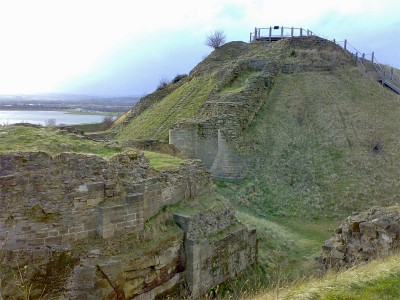The Battle of Wakefield

The remains of the motte and barbican at Sandal Castle.
© Wikimedia commons (attribution: Abcdef123456)
Associated places
Dates
30th December 1460Description
In September 1460 the Duke of York returned from exile in Ireland and entered London on 10 October. After striding through Parliament, the duke placed his hand on Henry VI’s empty throne, thereby announcing his hereditary right. It was a miscalculation, and one that even his closest allies neither anticipated nor accepted. The lords present did not wish to abandon their king and instead agreed to recognize York’s claim on Henry’s death—thereby disinheriting Henry’s son. The Act of Accord was ratified 24 October. Contented for the moment, on 9 December the duke and his brother-in-law the earl of Salisbury left for Yorkshire both to consolidate their position and to buffer attacks from Scotland.
They made their base at Sandal Castle outside of Wakefield on 21 December. The Yorkists bargained a Christmas truce with the Lancastrians, who were camped at the nearby Pontefract Castle. For unknown reason, however, on 30 December York decided to leave the castle with his army. Waiting below was the Lancastrian army under Andrew Trollope, the duke of Somerset and Lord Clifford.
Wakefield was a decisive Lancastrian victory. York died in the thick of the fighting along with his nephew Thomas Neville. His seventeen-year-old son Edmund, earl of Rutland was reportedly cornered by Lord Clifford and murdered as recompense for his father’s death at the Battle of St. Albans. Richard Neville, earl of Salisbury, York’s brother-in-law, was executed after the fighting.

